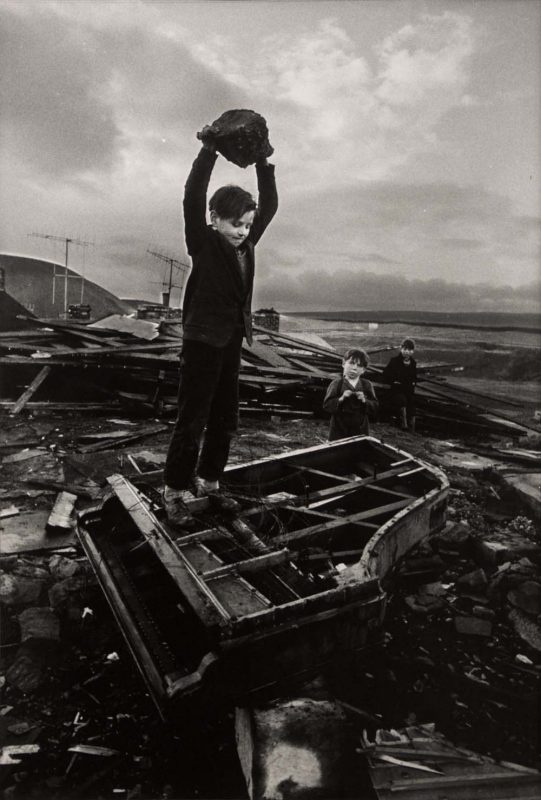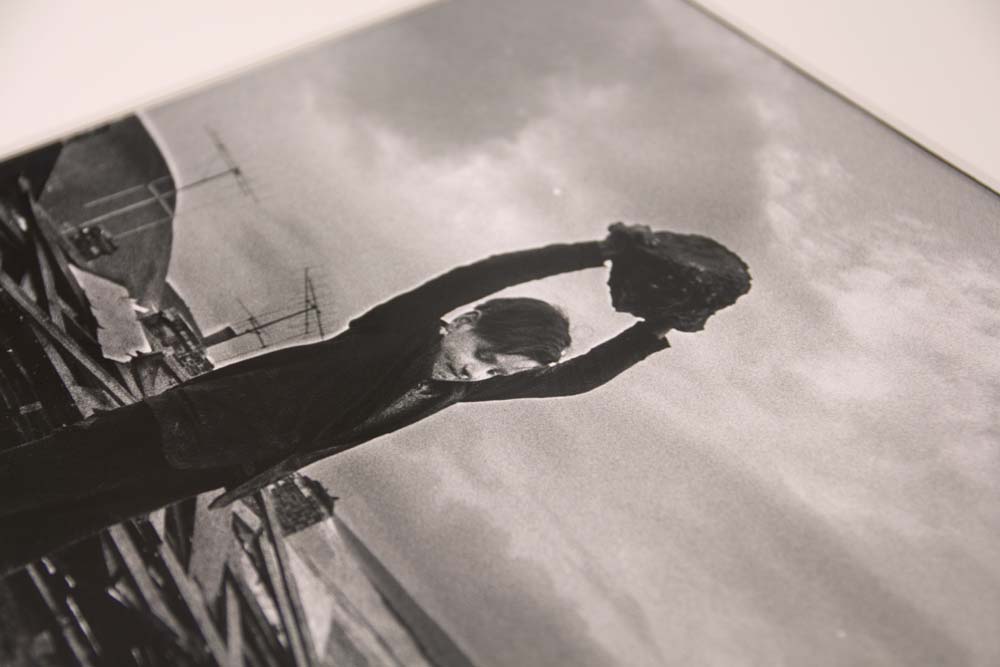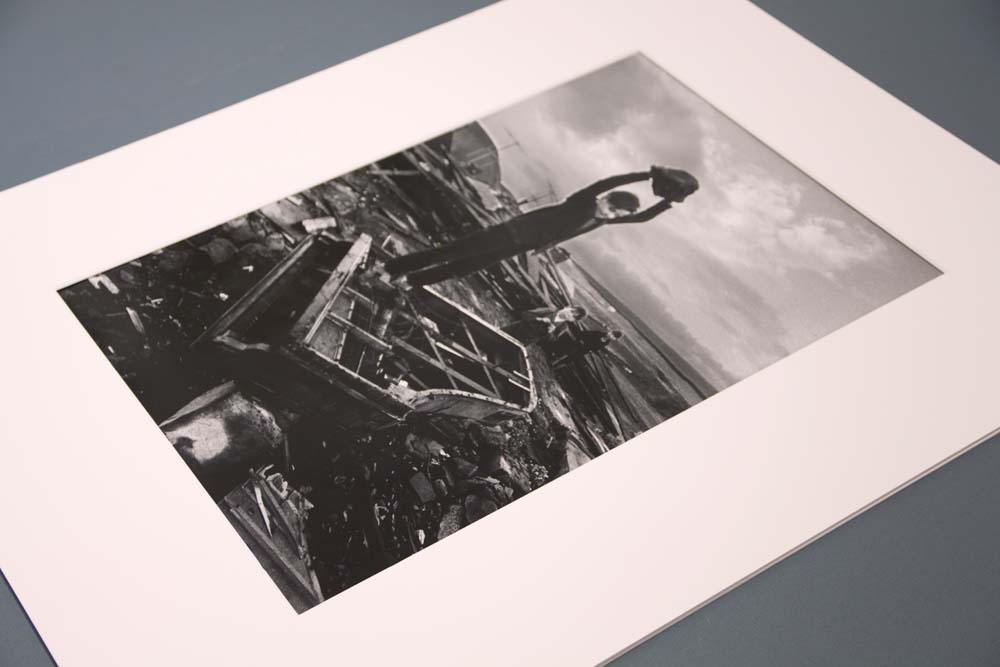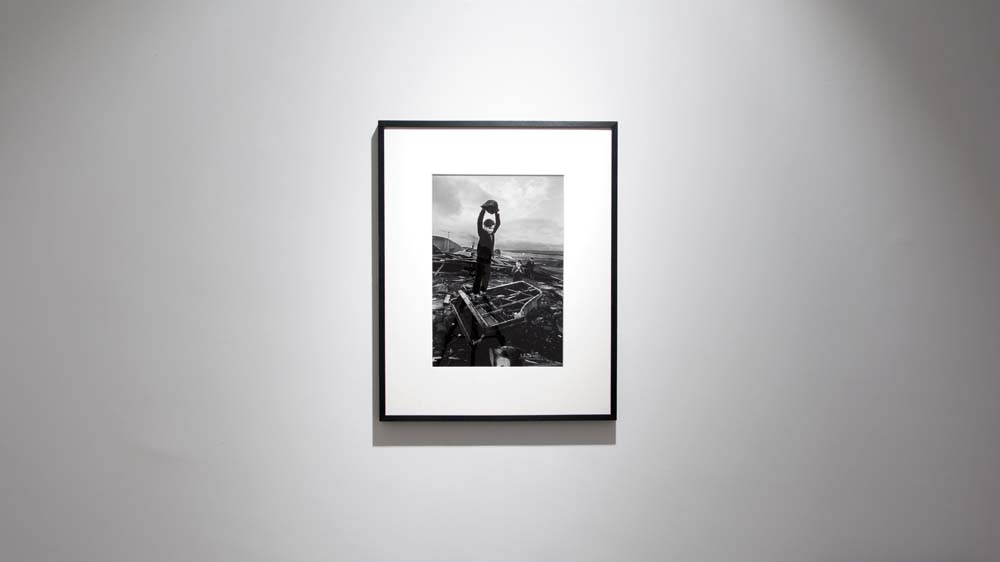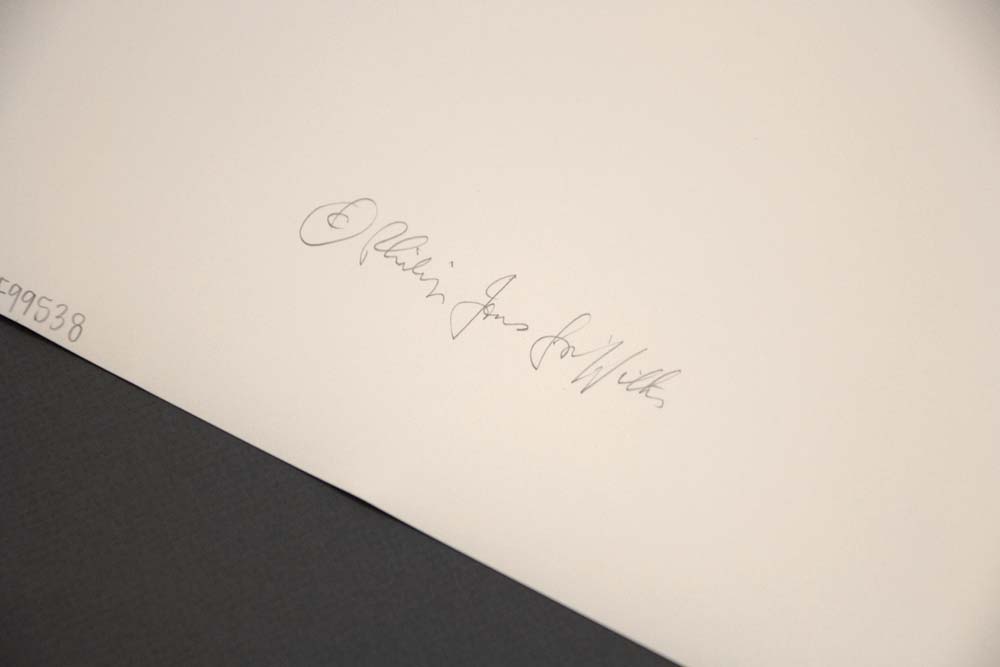Boy Destroying Piano, Wales, 1961
PHILIP JONES GRIFFITHS
Signed on reverse
Silver gelatin print, printed prior to 2008
20 x 16 inches

This photograph, captured by Welsh photographer Philip Jones Griffiths, describes a startling scene in which a young boy prepares to hurl a rock onto a derelict piano. It is one of the most celebrated of Griffiths’ works of Great Britain, and has become mythologised as a kind of visual metaphor for Wales’ economic decline in the mid-twentieth century.
Philip Jones Griffiths was born in the rural Northern Welsh town of Rhuddlan, Flintshire, in 1936. Early in his career, Griffiths generated his own photo-stories, including one of English evacuees in Wales, and another that focussed on the dispossessed youth of an impoverished teenage generation. His work from Wales and Northern Ireland in the early 1960s captured the tragedies and absurdities of a society slowly emerging from post-war traumas and years of austerity.
Taken in 1961, in Pant-y-Waun, Wales, this incisive photograph describes a seemingly wanton act of destruction. However, Griffiths uses this scene to subtly reference both class and culture. Pant-y-Waun was once, in the 1930s, voted the ‘Most Beautiful Village in South Wales’, and this photograph uses the destruction of a piano, a thing so potently beautiful, as a symbol of the decline of this area during the 1960s.
The photograph depicts the steely determination on the small boy’s face as he gleefully and forcefully embarks on his destructive act. It is skilfully captured right at the climax of the action, when the child has the rock poised directly over his head. When the photographer approached the child, later, to ask what he was doing with the piano, the child replied, “My mother gave it to me to mend.”
His work from Wales and Northern Ireland in the early 1960s captured the tragedies and absurdities of a society slowly emerging from post-war traumas and years of austerity.
Philip Jones Griffiths went on to photograph all around the world, becoming one of the most respected figures in photojournalism, well known for his years of work documenting the aftermath of war in Vietnam. He would later say that his early experience in Wales helped him to identify with oppressed countries everywhere.
There are very few signed collector’s prints available of Griffiths’ work, making this large 20 x 16 inch print of one of his most celebrated images particularly rare. It is in excellent condition.
